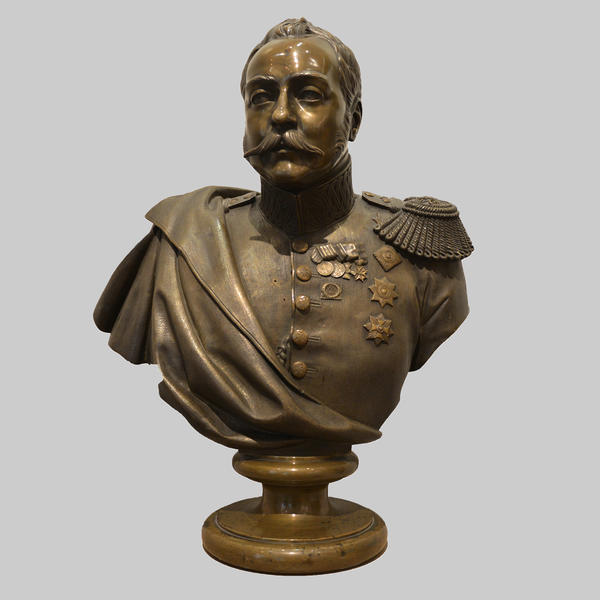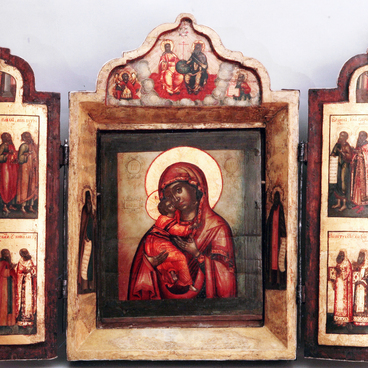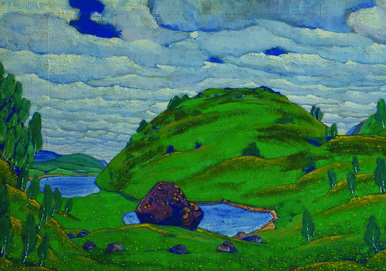Giovanni Vitali, better known as Ivan Vitali, was a famous Russian sculptor of Italian origin. He was not only a graduate of the Academy of Fine Arts but also its Professor. His works are in the collection of the State Hermitage Museum and decorate St. Isaac’s Cathedral the bas-reliefs of which were created by Vitali.
The sculptor began working in the 1810s as a monumentalist, and his talent of a portrait sculptor revealed itself already in the 1830s. During that period, Vitaly created a bust of Grand Duke Mikhail Pavlovich represented in the exposition of the Astrakhan Art Gallery.
The portrait of the Grand Duke is made of bronze, the material sculptors loved for its noble golden shine and plastic properties which made it possible to accurately convey the smallest details of appearance and figure, and the material texture of the costume.
Mikhail Pavlovich by Vitali is depicted in a classic tradition. He appears as a wise and calm commander with self-esteem and philosophical attitude to life. Vitali sculpted every detail of the orders and medals of Mikhail Pavlovich which attest to his long and impeccable service.
Grand Duke Mikhail Pavlovich was the youngest son of Emperor Paul I and Maria Fedorovna. In 1819, he took control of the domestic artillery and achieved much as the Chief of the Artillery Department.
For example, it was the Grand Duke who initiated foundation of the Artillery School for training officers in 1820 which later became the Mikhailovsky Artillery Academy.
Being concerned about the development of the Russian artillery, Mikhail Pavlovich laid down the foundation for the system of military education in Russia: a technical school opened at the St. Petersburg Arsenal to train qualified specialists and a School of Masters of Gunpowder, Saltpeter and Sulfur Industry opened at the Okhta gunpowder factory. In addition, Mikhail Pavlovich contributed to foundation of a number of schools to train competent lower ranks of artillery.
Moreover, Mikhail Pavlovich paid great attention to rearmament of artillery, development of artillery science, modification of weapons manufacturing technology and construction of fortifications.
The sculptor began working in the 1810s as a monumentalist, and his talent of a portrait sculptor revealed itself already in the 1830s. During that period, Vitaly created a bust of Grand Duke Mikhail Pavlovich represented in the exposition of the Astrakhan Art Gallery.
The portrait of the Grand Duke is made of bronze, the material sculptors loved for its noble golden shine and plastic properties which made it possible to accurately convey the smallest details of appearance and figure, and the material texture of the costume.
Mikhail Pavlovich by Vitali is depicted in a classic tradition. He appears as a wise and calm commander with self-esteem and philosophical attitude to life. Vitali sculpted every detail of the orders and medals of Mikhail Pavlovich which attest to his long and impeccable service.
Grand Duke Mikhail Pavlovich was the youngest son of Emperor Paul I and Maria Fedorovna. In 1819, he took control of the domestic artillery and achieved much as the Chief of the Artillery Department.
For example, it was the Grand Duke who initiated foundation of the Artillery School for training officers in 1820 which later became the Mikhailovsky Artillery Academy.
Being concerned about the development of the Russian artillery, Mikhail Pavlovich laid down the foundation for the system of military education in Russia: a technical school opened at the St. Petersburg Arsenal to train qualified specialists and a School of Masters of Gunpowder, Saltpeter and Sulfur Industry opened at the Okhta gunpowder factory. In addition, Mikhail Pavlovich contributed to foundation of a number of schools to train competent lower ranks of artillery.
Moreover, Mikhail Pavlovich paid great attention to rearmament of artillery, development of artillery science, modification of weapons manufacturing technology and construction of fortifications.



